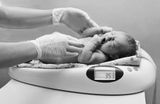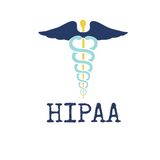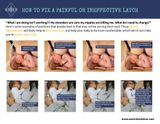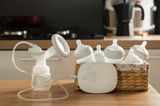If you're thinking about becoming an International Board Certified Lactation Consultant (IBCLC) and you've ever read through the IBLCE website and been confused about where to start, you are not the only one!
I spent days rereading their website when I first looked into becoming an IBCLC. I wasn't a nurse, doctor, or other medical professional; I couldn't move to attend an in-person university. I was also working full-time supporting my family, and the time I had outside of of work I was with my children.
It took three years and a lot of hard work, but I now work full time as an IBCLC—it's possible! And since I get asked all the time what it takes to get certified, I wanted to share my understanding of the requirements to take the exam and become an IBCLC and then tell my story of how I trained.
Requirements to become an IBCLC
The IBLCE gives you 3 different ways to become a lactation consultant, which they call pathways. You only need to complete one pathway to sit the exam. I am going to do my best to break it down for you, so you can find the best pathway for you. Here's an overview of the pathways:
- Pathway 1: Medical professionals and volunteers at a recognised breastfeeding support counsellor organization.
This is the pathway I chose. It should really be broken down into 2 subgroups: - Option A: For volunteers at a recognised breastfeeding support counsellor organization
- Option B: For medical professionals
- Pathway 2: University degree in lactation or a field that includes lactation.
- Pathway 3: Local mentorship.
(Could be at a hospital or with a private practice IBCLC.)
Also good to know: hours can be done remotely because of COVID until December 31, 2022, according to the IBCLE at the time or writing.
Requirements that all the pathways have in common
- 90 hours of lactation-specific training (within 5 years immediately prior to examination application)
- 5 hours of communication skills training (within 5 years immediately prior to examination application)
- a number of practical hours (the number of hours is different for each pathway)
Additional pathway requirements
Pathway 1, Option A: Volunteer at a recognized breastfeeding support counsellor organization
- Health science classes:
- University-level courses:
- Biology, Human Anatomy, and Physiology (can be take separately, or Human Biology covers all three)
- Infant and child growth and development
- Intro to clinical research
- Nutrition
- Psychology or Counselling Skills or Communication Skills
- Sociology or Cultural Sensitivity or Cultural Anthropology
- Not university-level classes (very short):
- Basic Life Support
- Medical Documentation
- Medical Terminology
- Occupational Safety and Security for Health Professionals
- Professional Ethics for Health Professionals
- Universal Safety Precautions and Infection Control
Check pages 5-–10 of the "Health Sciences Education Guide" on what classes count for each of these requirements.
- Lactation-specific clinical practice:
- 1,000 hours (within 5 years)
- Do not need to be supervised
- Hours earned after January 1, 2022, must be logged[1] (currently, each year of leadership counts as 500 hours)
Pathway 1, Option B: Medical professional
Most places of employment will help guide you through the process, so I won't say a lot about this route, but the basic requirements are:
- Lactation-specific clinical practice
- 1,000 hours (within 5 years)
- Do not need to be supervised
Pathway 2: University degree in lactation or field that includes lactation
It can be difficult to find practical hour placements: make sure you chose a program that helps you. Here is the list of qualifying programs.
In addition to completing your course of study, requirements include:
- Lactation-specific clinical practice:
- 300 hours (within 5 years)
- Directly supervised
Pathway 3: Local mentorship
Working directly with an IBCLC can be a great way to gain experience, but placements can be hard to find. Could be at a hospital or with a private practice IBCLC.
- Health science classes:
- University-level courses:
- Biology, Human Anatomy, and Physiology (can be take separately, or Human Biology covers all three)
- Infant and child growth and development
- Intro to clinical research
- Nutrition
- Psychology or Counselling Skills or Communication Skills
- Sociology or Cultural Sensitivity or Cultural Anthropology
- Not university-level classes (very short):
- Basic Life Support
- Medical Documentation
- Medical Terminology
- Occupational Safety and Security for Health Professionals
- Professional Ethics for Health Professionals
- Universal Safety Precautions and Infection Control
Check pages 5-–10 of the "Health Sciences Education Guide" on what classes count for each of these requirements.
- Lactation-specific clinical practice:
- Hours must be completed based on your plan that you submit to IBLCE for approval before beginning.
- 500 hours (within 5 years)
- Directly supervised
Auditing
IBLCE uses a random auditing system to make sure you have completed all your requirements before the exam. You will only be required to show documentation of completion if you are selected.
Applying to sit the exam
The exam is 4 hours long and is offered twice a year around the world in April and September. You have to apply in the fall for the April exam, and in the spring for the September exam. Results usually take 10–12 weeks to get back.
What if I fail?
You can sit for the next exam even though the application deadline will have passed by the time you get your results.
My journey to becoming an IBCLC
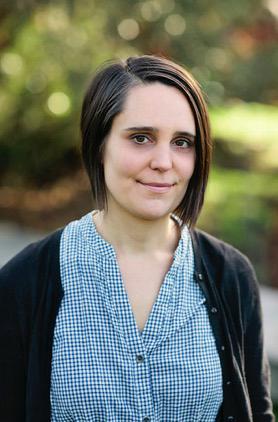
It took me 3 years after deciding to become an IBCLC to sit the exam. Pathway 1 allowed me to complete all volunteer hours with my children with me. So, although I had to complete more clinical hours, it was easier for me to find time for them.
Here's how I completed each of the requirements for Pathway 1.
Health science requirement
After spending a lot of time deciphering the requirements, I realized I already had done some of the health science classes when I was working on my Child Development degree at San Francisco State. I still had to take Human Biology (this class wasn't easy to find, but it saved me a lot of time as opposed to taking Anatomy, Physiology, and Biology separately), Nutrition and Cultural Anthropology. Cultural Anthropology was my favorite of all these classes, and I use much of what I learned everyday in practice.
I searched all my local community colleges' online class course catalogues and created a plan of when I would take each class and through which college I would take it. I planned to be done around the time I would finish my volunteer hours, meaning I never took more than one class per semester. This was also a very affordable way to do it. I knew the shorter courses required for the health science component would not be available at community college, so I enrolled in Lactation Education Resources' package of additional general education, and they got the job done.
Lactation-specific hours
To get my practical hours, I started attending La Leche League meetings and begun the process of becoming a leader. This took about a year for me, although the timing is very dependent on the leaders you are training with, their willingness and availability—but I think a year is pretty standard.
I learned a lot through their training and my volunteer work. La Leche League International is a huge non-profit, so it is mostly run by volunteers. It has its great points and a lot of difficulties as well. Parents' experience with LLL is mostly defined by the specific leaders in their area.
After becoming a leader I started taking calls and leading meetings supporting parents. Sometimes I had co-leaders there to support me, and other times I was on my own. One of the main things you are taught is when to refer to a lactation consultant which we did often.
The rules at the time meant that every year of leadership it was assumed I had done 500 hours of lactation-specific clinical practice. This meant I was able to sit the exam after 2 years. Soon you will need to log every hour until you reach 1,000 hours.
Lactation-specific education
Also during this time I took my 90 hours of lactation-specific education. I attended a one-week long Certified Lactation Educator (CLE) conference. The rest of the hours I completed online with Lactation Education Resources.
I wasn't super impressed with either to be honest, though I have seen some much more interesting courses and conferences come up in the last few years, with GOLD Lactation for example.
Remember, these hours can be on any topic relating to lactation. You do not need to complete any specific course, as long as you complete 90 hours in total. You can do a 12-hour online course on infant digestion related to lactation, or a 20-hour conference on tongue ties. I actually wish I had taken more focused courses, rather than generalized classes, so I recommend surveying all your options.
The exam
Over 3 years, I had studied hard and worked with a lot of families. The hours I spent with families was probably what helped me best to prepare for the exam, but I also took many practice tests. After my first I could see clearly what I needed to study and also bought study guides on those subjects, which I listened to in my car on my way to and from work. Then I waited very impatiently for months and I got my results back in mid December. I passed! Phew!
What comes next?
So you passed your test and you're now an IBCLC: congrats!
Immediately after passing I began working with East Bay Lactation Associates, an establish practice in my area. This was great experience. I learned a lot about running a lactation business, working with clients, and marketing. I then moved off on my own to grow Woven, my postpartum doula business, by adding lactation services.
There are many options once you have your IBCLC. If you are planning to start or grow your own business, I do really suggest getting help from the beginning from a lactation-specific business consultant, like Shondra Mattos. It is worth the money even in the short term, but it's important to remember that your business may very well not make money for the first year to two years, like any new business.
If you don't want to run your own business, you still have the option to work for some hospitals (though many require you to also be a registered nurse), work for WIC offices, pediatric practices, and other medical groups.
The number of lactation consultants continues to grow, but there are far fewer than is needed. If you need any help getting started, or have any further questions, join my group for professionals.
"Recognised Breastfeeding Support Counsellor Organisations", IBCLE, https://iblce.org/wp-content/uploads/2020/02/2020_February_recognised-breastfeeding-support-counsellor-organisations_ENGLISH.pdf ↩︎
